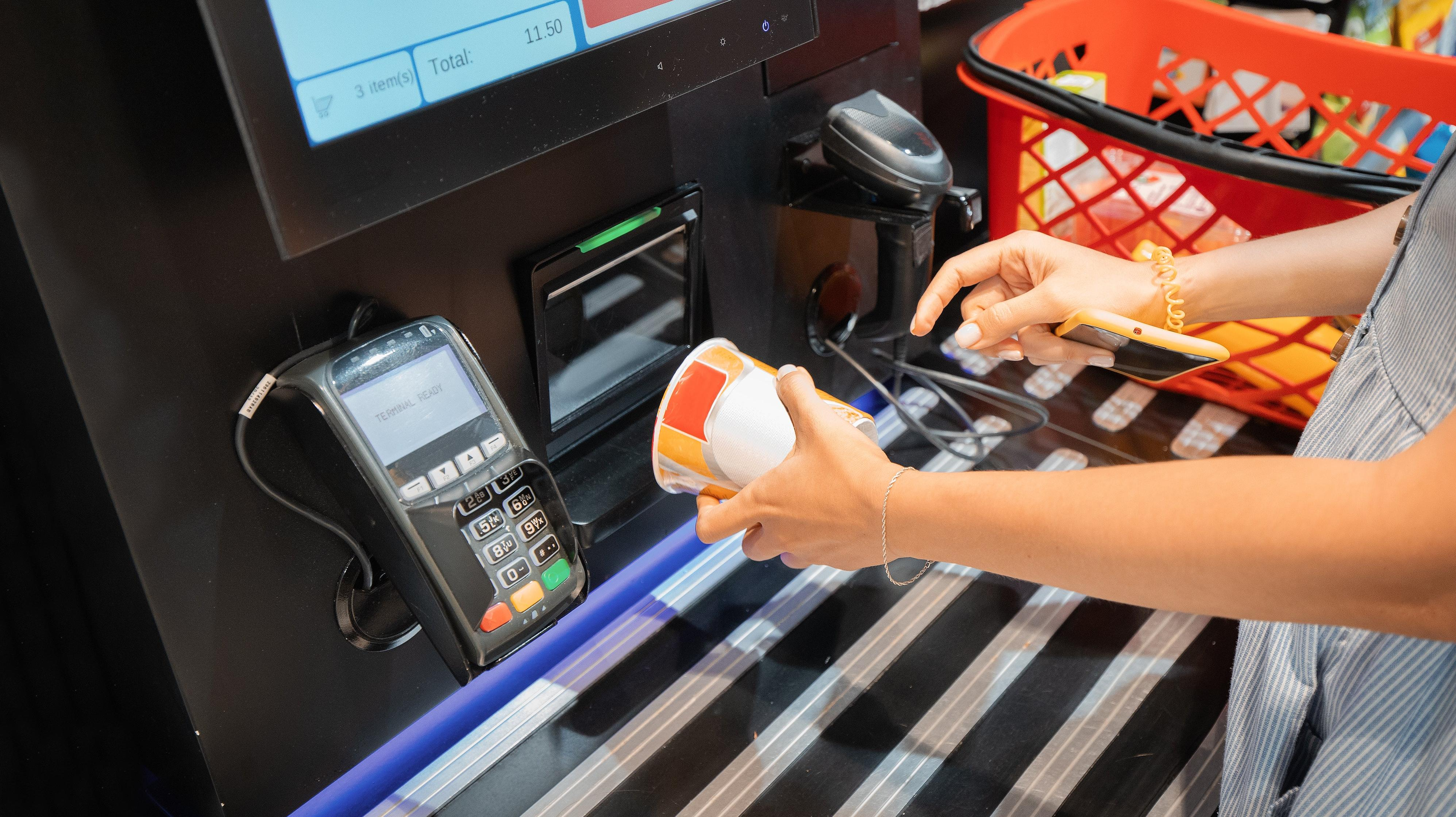There's No Way This Anti-Theft Checkout System Could Go Wrong
This AI-powered checkout system is designed to watch your every move.
In a move that doesn't sound hostile to the general public whatsoever, checkout terminal manufacturer Diebold Nixdorf has unveiled new cashier-less self-checkout technology meant to "reduce shrink, verify age for liquor sales, and speed up the process of buying products without barcodes," reports Supermarket News. It's powered by artificial intelligence, a technology that's clearly been documented to never, ever, make errors, right? Oh, wait.
AI-powered anti-theft checkout systems, explained
This AI-powered machine uses sophisticated computer vision to keep track of a shopper's every move throughout the checkout process. It monitors the transaction to ensure you've scanned all of your items, that no falsified barcodes have been scanned, and that you didn't put anything straight into your bag without scanning it first.
The technology is called Vynamic Smart Vision I Shrink Reduction. "Shrink," in retail terms, refers to inventory that has been lost due to damage or, in this case, theft. Unveiled at the National Retail Federation's Big Show convention in New York City, this checkout system boasts one more unsettling feature: it has the alleged ability to verify a customer's age for alcohol sales based off of their appearance. This would theoretically speed up process issues like checkout times by skipping the step where a shopper has to present their ID to a human employee for verification.
Robotic age detection seems like a shaky concept at best
There are so many potential pitfalls associated with the Vynamic Smart Vision I Shrink Reduction system that I'm not even sure where to begin. But let's start with the age verification.
Ask a stranger to peg exactly how old you are and see how accurate the answer is. Oftentimes they'll be incorrect. In my case, I've been blessed with genes that give me a more youthful appearance than my actual age—I was often mistaken as a teenager well into my late twenties. That means I got carded constantly when I wanted to purchase alcohol in my early adulthood, which was... supposed to happen anyway.
I'm not entirely sure what artificial intelligence is adding to the process when it scans your physical appearance, because if you're purchasing alcohol, your age needs to be verified, not estimated. This whole age-determination feature tries to solve a problem by computer-based guessing when you already have an official government-issued card that says exactly how old you are which you carry on your person at all times.
Christoph Annemüller, Diebold Nixdorf's head of AI product management, gave Supermarket News a demonstration on how the age estimation system works (which is documented on video, starting at the 1:14 mark). The customer looks into the camera and the device computes how old you appear to be.
"Anyone estimated to be under the age of 27 can continue shopping, but at the end of the experience, somebody needs to check their age," Annemüller explains in the video. "And if you are over 27, just scan your items and you can check out without any manual age check."
But even the makers of face analysis systems, such as this one from Visage Technologies, admit that their own systems can be up to five years off. I question whether or not this system would be accurate enough to actually save that much time for anyone. Plus, imagine how useless this would be in, say, college towns, where so many people are actually young. It would simply add a step to the process and still result in the need to present an ID at the end.
Self-checkout systems are already prone to mistakes
I don't know about you, but when I'm grocery shopping, I already see plenty of errors introduced by self-checkout technology. The second I shift my bag around on the weighed bagging station to adjust for a newly scanned item, the system always alerts me that I've removed the item that needs to be paid for, almost without fail.
Even when I resettle the items on the weighing station, an employee will sometimes have to come over and manually override the system, which doesn't allow me to checkout any further until the computer's confusion has been resolved. With so many potential points of dispute in this complicated new system, I could see a lot of unintentional friction occur between customers and employees during correction.
Self-checkout tech can be invasive
The new checkout system has four cameras installed on its customer interface. One is to verify what type of produce you have, one is for the age verification (or "age estimation") system, and two are there to monitor your activity throughout the transaction. Not to mention the existence of other security cameras that might be installed independently by the grocery store to watch the checkout area.
When an employee comes to see why my self-checkout system is alerting them, I'm already annoyed, if not mildly stressed out. Being monitored at this level feels hostile, as if it's presupposing that I'm already going to do something nefarious when all I want is to buy my groceries and get out.
That's not a stress-free shopping environment. In fact, if this were the level of surveillance I was under when I was just grabbing some ingredients for dinner, I'd think about skipping this store in favor of one that doesn't feel like it's recording your every hand motion.
Finally, there's just an unavoidable feeling that this system (and the many others like it surely in development) exists to be punitive, and it can cause undue stress for those who are already facing challenges. When the mere act of purchasing groceries is stressful, adding extra layers of security and surveillance seems needlessly demoralizing. Don't get me wrong, technology can do some pretty marvelous things sometimes. But when it's outright called a Shrink Reduction system, it reveals how corporations really feel about us.
